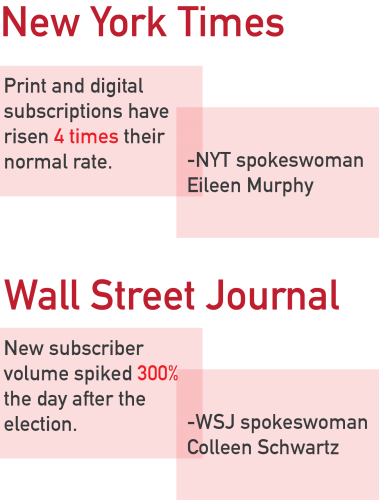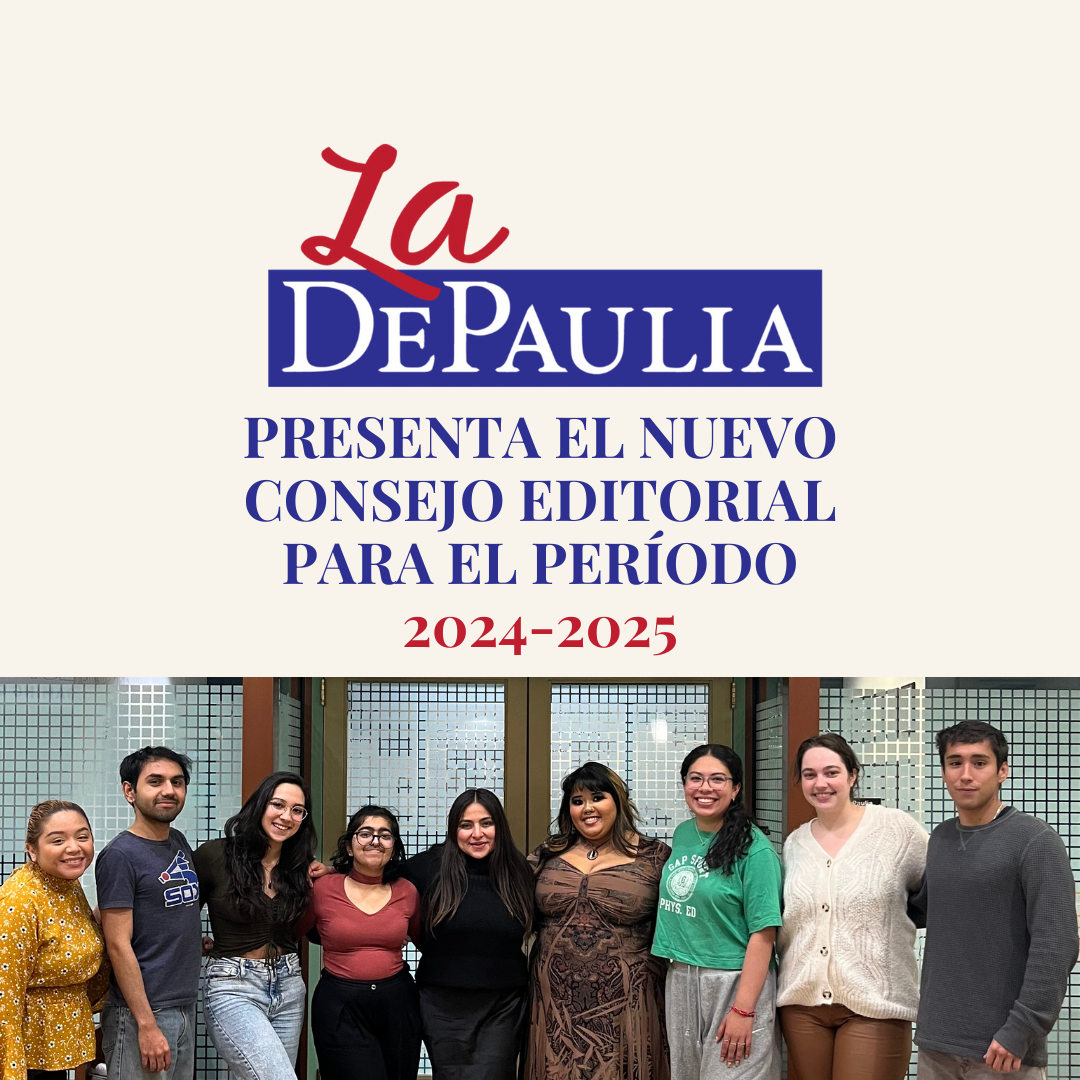An unexpected president-elect was not the only result of the presidential election. 2016 ended with the field of journalism coming under scrutiny due to reports of false news being spread via social media in the midst of the election. Created with the intention to gain revenue from ads and click-baits these false news reports have increased the already strong distrust of journalism and the mass media in America. It has brought to light an emerging confrontation between the phenomenon of social media’s quick accessibility and the growing pains of digital news.
With an incoming Trump administration that keeps pushing back their first press conference and whose Twitter activity has caused even more skepticism, reading unbiased, factual reporting not only on politics, but all social issues from non-partisan, established news sources is even more crucial.
“People should care about fake news because it changes the way people perceive certain issues, such as the election. Fake news can really disguise itself as real news to some and it becomes a way to instill these beliefs, opinions, even falsities and pass them off as real,” Madeline Happold, DePaul junior and journalism major, said. “It can shape someone’s opinions and just continue this almost box-like thinking, like being stuck in a bubble not knowing what is true and what isn’t.”
‘False news’ has created distrust in the public arena, but the broad term needs to be deciphered.
Amy Merrick, journalism professor and advisor of DePaul’s student-run magazine 14East and the Society of Professional Journalists, defines the broad term.
 “There are stories that are just wrong either in their facts or their tongues, but not deliberately wrong where people misinterpret information or a source is trying to steer them in a different direction. Those stories are misleading but not necessarily by intention. Then, there has always been propaganda where people are deliberately misleading for political purposes,” Merrick said. “I think what we’re talking about today as fake news is a more recent development based on the revenue model these tech companies have established. People can make money by getting someone to click on a headline and they don’t necessarily care if it’s true or not.”
“There are stories that are just wrong either in their facts or their tongues, but not deliberately wrong where people misinterpret information or a source is trying to steer them in a different direction. Those stories are misleading but not necessarily by intention. Then, there has always been propaganda where people are deliberately misleading for political purposes,” Merrick said. “I think what we’re talking about today as fake news is a more recent development based on the revenue model these tech companies have established. People can make money by getting someone to click on a headline and they don’t necessarily care if it’s true or not.”
The American public, which relies heavily on correct information, is now facing the question of how can they decipher what is accurate information from what is deceitful on social media. And, newsrooms across America are facing the question of how do they set themselves apart from the vast generalizations associated with ‘fake news.’
“Social media is like a double-edged sword for news sources. It is a great way to share stories and increase readership, but they are also a platform for fake news or biased news to mix with credible sources,” Happold said.

Fingers have been pointed at the reign of social media sites such as Facebook for its role in allowing false news to be hastily spread. During the midst of the election, Mark Zuckerberg, in a statement, made clear he disqualified the accusation of false news throughout Facebook as a platform.
“Only a very small amount is fake news and hoaxes. The hoaxes that do exist are not limited to one partisan view, or even to politics (…)This is an area where I believe we must proceed very carefully though. Identifying the ‘truth’ is complicated,” Zuckerberg said.
According to a study conducted by the Pew Research Center, 82 percent of U.S. adults ranging from the ages of 18 to 29 access social media as their main source of news. Sixty-two percent of U.S. adults outside of the 18 to 29 age range, depend on social media as well. This is compared to the only 12 percent of U.S. adults who received their news through social media 20 years ago.
With such a high percentage of young adults depending on social media to access their news and publishers using social media as a tool to enhance their audience, it is necessary to view the end goals and professional mission of both tech companies and news organizations. While Zuckerberg’s mission for his communication-based company is to connect people, journalism is to accurately inform the public.
“My impression is that he doesn’t want Facebook to have to make the professional or ethical judgements of a publisher because it is first and foremost a tech company,” Merrick said. “To be a news publisher is really different. You have goals that are not necessarily all about making money. It is part of it, but there is also a public mission. Mark Zuckerberg doesn’t necessarily want to take on that public mission.”
Bruce Newman, marketing professor in the Driehaus College of Business and author of “The Marketing Revolution in Politics Today: What Recent U.S. Presidential Campaigns Can Teach Us About Effective Marketing,” said false news was easily spread due to social media and the fast-paced nature of journalism.
“The bottom line of this problem is it takes much more time on both parties to report the truth,” Newman said. “If anything the creation of false news sites was a harsh lesson on the discrepancies of social media.”
Facebook and Twitter are hot zones for false news sites and articles to thrive. The most logical and responsible method to combat the current false news epidemic is to not use social media as a main news source. Rather subscribe to independent, unbiased news sources in order to access fact based news reports.
And, this is being noted. Both spokeswomen for the New York Times and the Wall Street Journal have stated subscriptions have dramatically increased since election day.
Merrick suggests that professional news organizations are currently seeking to answer the question of how they can build credibility with their audiences.
“One of those things is being transparent about how you get your information and where you are linking your documents, people who show how they did their reporting and are inviting people to collaborate and contribute those are the ones that are building trust.”
Not only is more responsibility put on the backs of journalists and tech companies, but on the backs of American citizens as well.
“It puts more responsibility on the citizen voter for them to decipher between truth and fiction. They make decisions based on perceptions, truth and emotion,” Newman said. “Without one being able to determine what is real and fake, information does turn into propaganda. It becomes emotional and democracy becomes challenged.”







